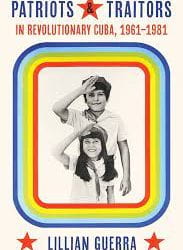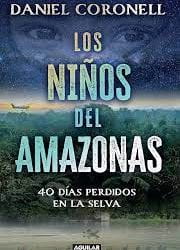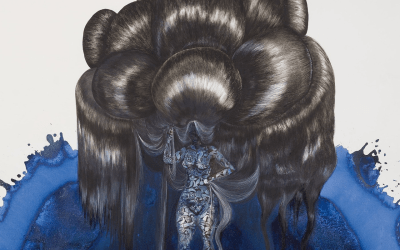A Review of Indigenous Movements and their Critics
Pan-Maya Activism in Guatemala

Indigenous Movements and their Critics: Pan-Maya Activism in Guatemala by Kay B. Warren
I arrived in Guatemala for the first time in 1996 to administer the cultural, information and educational exchange programs of the U.S. Embassy. This must have been around the same time that Kay Warren was putting the final touches on her book. Like many others, I was immediately struck by how much of the dynamism and creativity in Guatemala today resides in the burgeoning indigenous rights movement often called the “Mayan Movement” or “Pan-Mayanism”. Although no stranger to the region nor to questions of ethnicity and cultural identity, my own journey towards understanding this phenomenon was immeasurably enriched by experts like Kay Warren, scholars who combined an empathy for Guatemala’s native peoples with extended field work and research going back decades in the country’s turbulent and bloody recent history.
Inspired by the grassroots resurgence of Mayan people, we have used Embassy programs, in a very modest way, to contribute to the intellectual development of a wide range of Mayan organizations and individuals, many of them vividly described in Dr. Warren’s book. I am particularly proud that there are more Guatemala Mayan students on U.S. government scholarships, both in Guatemala and in the United States, right now than ever before.
Warren accomplishes the near impossible in her essential new book. She gives us a rich tapestry, a snapshot of a people on the move, with all their diversity and contradictions. She provides an excellent introduction to one of the more interesting and significant developments in Latin America today: the revival of a marginalized ethnic majority in post-war Guatemala. Warren’s stated goal is to look at ways that “Maya public intellectuals, as cultural nationalists and agents of globalization, have pursued projects for self-determination in Guatemala’s climate of chronic political uncertainty.”
The book’s nine chapters examine different aspects of the Mayan movement, from the writings of several of its leading intellectuals to the reaction of its non-Indian critics to grassroots activism on the village level. Warren ably traces the “invisible thread of ethnicity” as the movement unfolds within the context of an only recently democratic Guatemala formally at peace since December 1996.
However, there are the various blank spaces left uncharted in her overview of this Mayan resurgence, plus a few factual errors such making Luis Enrique Sam Colop a graduate of USAC rather than Rafael Landivar University. Warren devotes three entire chapters (4,8, and 9) to happenings in the small town of San Andres Semetabaj while the surprising outcome of the 1995 national elections, surely fertile ground for any scholar of the Mayans, is left untouched. Those elections showed the remarkable strength of the right-wing FRG in indigenous-majority departments. Even more significant was the victory of several Mayan civic committees in local races. The victory of the Xelju civic committee, under the leadership of Kiche’e “public intellectuals” Rigoberto Queme Chay and Ricardo Cajas, in Guatemala’s second city, Quetzaltenango, the metropolis of the country’s indigenous heartland, was so important because it symbolized precisely the metamorphosis of an indigenous civic-cultural organization into a political machine. Significantly, the 1999 Quetzaltenango Mayor’s annual report deals with both traditional indigenous issues such as bilingual education and the Mayan university project and more mundane matters of local governance such as paving streets and supplying water to the city. Warren touches briefly upon the 1996 racist anti-Queme graffiti campaign while neglecting the much more important reality of these Mayan public intellectuals in power.
Several other striking events occurred after the book was completed. The success of the Kaqchikel municipal government of Solola, also headed by a civic committee, in running the Guatemalan Army out of town shows how fast Guatemala is changing and was also an important milestone unnoticed by the outside world. The 1997 decision of the Guatemalan Army to convert its notorious former base into a military high school (an Adolfo V. Hall Institute) was totally rejected by the town’s inhabitants who succeeded in winning over the central government. The site will become a university extension center, the first in Solola. The book has a photograph of those infamous giant army boots outside the base. Both boots and base are gone.
Finally, in a work whose stated focus is on Mayan intellectuals in the public arena, Warren is very subjective in her treatment of these individuals. The brilliant, U.S.-based, Victor Montejo is not well known at all in Guatemala, even in many Pan-Mayan circles. Warren’s analysis of Sam Colop’s thinking seems skewed towards earlier writings. The journalist of Achi origin, Haroldo Shetemul, who became the first Mayan director of a major Guatemalan media organ, should be included. The prolific Estuardo Zapeta (like Montejo, a student of Robert Carmack’s at SUNY-Albany) is undeservedly ignored. Zapeta was the first self-identified indigenous columnist for a daily newspaper in Guatemala at the age of 28. With his acerbic pen and neo-liberal views, Zapeta is a polarizing figure both within and without the Mayan movement, there is no doubt he plays an extremely prominent role in public discourse on Mayan issues.
Despite these criticisms, Warren’s study is a qualitative leap in the right direction. Particularly insightful is her treatment of the often thorny relationship between Mayan intellectuals and foreign anthropologists. Guatemala is changing so rapidly (mostly for the better) these days that any book on it published these days seems condemned to a perilously rapid obsolescence and I can only hope that Kay Warren is already hard at work on a sequel to this interesting book. This is an important work for American readers; it shows us a region that is much more complex and diverse than the prophets of regional integration would have us believe. As Warren so rightly notes, “the movement has already contributed to a paradigmatic shift” in all our thinking. One thing is clear, that the more democratic Guatemala becomes, the more “Mayan” her future will be.
Spring 1999
Alberto M. Fernandez is USIS Director at the American Embassy in Guatemala City, Guatemala.
Related Articles
A Review of Patriots and Traitors in Revolutionary Cuba, 1961-1981
I remember when I first heard Lillian Guerra speak: over fifteen years ago, at Brown University, about her third book, Visions of Power in Cuba: Revolution, Redemption and Resistance (1959-1971).
A Review of Los Niños del Amazonas: 40 Días Perdidos en la Selva
Los niños del Amazonas. 40 días perdidos en la selva is the first true book by Colombian journalist Daniel Coronell, whose long and impressive career speaks for itself: news director of manifold networks; recipient of prestigious recognitions such as Emmys, Peabodys and Simón Bolívar prizes; and arguably the most widely read columnist in Colombia, where he is as much admired as he is feared.
A Review of Channeling Knowledges: Water and Afro-Diasporic Spirits in Latinx and Caribbean Worlds
Water is a powerful tenet of Afro-diasporic religions that troubles academic disciplines and racial categories that define state, military and geographic borders.




